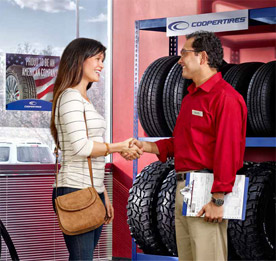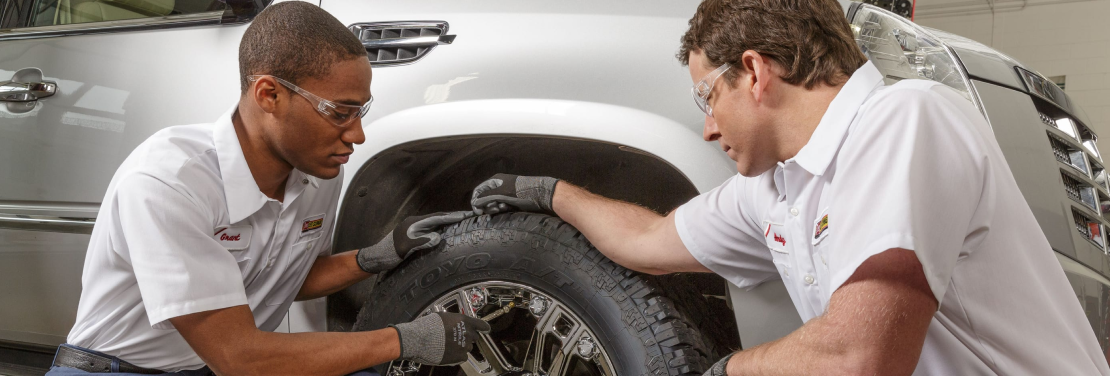Expert Morris Tire and Alignment Services: Guarantee a Smooth and Safe Drive
Expert Morris Tire and Alignment Services: Guarantee a Smooth and Safe Drive
Blog Article
Tire Service: The Effect of Weather
When it comes to making certain optimal performance and safety on the road, comprehending the effect of weather condition problems on tire solution is essential. In this discussion, we will check out the elaborate connection in between weather condition conditions and tire service, dropping light on the significance of weather-specific tire maintenance practices and considerations.
Heat and Tire Performance
When exposed to high temperatures, tires experience changes in efficiency that can dramatically influence lorry safety and security and handling. The warmth produced from extended driving or hot weather conditions creates the tire rubber to soften, bring about lowered walk life and boosted wear. As the rubber becomes softer, the tire's grip on the roadway lessens, impacting braking distances and total traction. In extreme instances, extreme heat can also create tire blowouts, presenting a severe safety and security danger to the car and its occupants.
Moreover, high temperature levels can increase the process of tire aging, triggering the rubber to degrade more rapidly. To alleviate the results of heat on tire performance, motorists need to routinely inspect their tire stress, revolve tires to make certain even wear, and examine for any type of indicators of damages.
Winter Effects
Cold climate problems can have a considerable effect on tire performance and safety. In cool climate, tires might likewise lose air stress a lot more quickly, which can affect handling and gas effectiveness.
To reduce the effects of winter on tires, it is vital to on a regular basis inspect tire pressure and inflate them to the supplier's suggested levels. Making use of wintertime or all-season tires developed for cool weather condition conditions can additionally enhance traction and hold on icy or snowy roads - discount tires morris il. Appropriate tire upkeep, consisting of regular examinations for wear and damage, comes to be even extra important during cooler months to guarantee optimum performance and safety and security
Rainy Conditions Effect
During rainy conditions, tire performance and safety can be considerably influenced by the wet road surfaces and reduced visibility. The tread pattern of tires plays an important duty in keeping grip on damp roads. Tires with worn-out treads are more prone to hydroplaning, where a layer of water builds up in between the roadway and the tire surface area, causing loss of traction. To battle this, vehicle drivers need to consistently evaluate their tires for appropriate walk depth and take into consideration purchasing tires particularly developed for wet problems.

Snow and Tire Safety
Snow-covered roadways pose special challenges for motorists, stressing the significance of correct tire selection and upkeep. When driving in snowy conditions, having the best tires can make a substantial difference in security and efficiency. Winter tires are created with unique rubber compounds and walk patterns to supply much better grip on snow and ice contrasted to all-season tires. The much deeper footsteps and sipes of winter tires assist grasp the roadway better, decreasing the danger of sliding and gliding.
Along with using winter tires, it is important to guarantee they are appropriately blown up. Cold climate can create tire stress to go down, influencing grip and handling (tire shop morris). Frequently inspecting and preserving the appropriate tire pressure is important for optimal performance in snowy problems

Weather-Related Tire Maintenance
When encountered with numerous weather, appropriate tire upkeep becomes a critical aspect of lorry safety and efficiency. Weather-related tire upkeep encompasses a series of practices aimed at making certain optimal tire function and long life in different weather condition circumstances. One key element of weather-related tire upkeep is tire stress policy. Changing temperature levels can cause tire pressure to differ, influencing grip and fuel effectiveness. Consistently changing and inspecting tire stress according to manufacturer recommendations is necessary for secure driving in transforming climate condition. Furthermore, tire walk deepness plays a significant function in managing different weather aspects. Tires with appropriate step deepness give far better grasp on damp or icy roads, reducing the risk of hydroplaning official source or skidding. more info here When step wear gets to a specific deepness is important for preserving grip and security in unfavorable weather condition, checking tire walk frequently and replacing tires. By prioritizing weather-related tire upkeep, drivers can boost safety, boost lorry efficiency, and extend the lifespan of their tires.
Conclusion
In final thought, climate conditions have a considerable influence on tire performance and security (tires morris il). From warmth affecting tire pressure and put on to cool weather decreasing grip, it is essential to consider the weather condition when preserving and making use of tires.
In this conversation, we will explore the elaborate connection in between climate problems and tire solution, shedding light on the importance of weather-specific tire maintenance methods and considerations.

Report this page